Related Research Articles

Abimelech was the generic name given to all Philistine kings in the Hebrew Bible from the time of Abraham through King David. In the Book of Judges, Abimelech, son of Gideon, of the Tribe of Manasseh, is proclaimed king of Shechem after the death of his father.

Magna Carta Libertatum, commonly called Magna Carta or sometimes Magna Charta, is a royal charter of rights agreed to by King John of England at Runnymede, near Windsor, on 15 June 1215. First drafted by the Archbishop of Canterbury, Cardinal Stephen Langton, to make peace between the unpopular king and a group of rebel barons, it promised the protection of church rights, protection for the barons from illegal imprisonment, access to swift and impartial justice, and limitations on feudal payments to the Crown, to be implemented through a council of 25 barons. Neither side stood by their commitments, and the charter was annulled by Pope Innocent III, leading to the First Barons' War.
Salting the earth, or sowing with salt, is the ritual of spreading salt on the sites of cities razed by conquerors. It originated as a curse on re-inhabitation in the ancient Near East and became a well-established folkloric motif in the Middle Ages. The best-known example is the salting of Shechem as narrated in the Biblical Book of Judges, 9:45. The supposed salting of Carthage is now believed to be a 19th century invention.
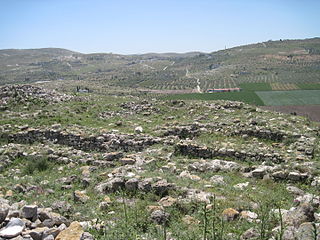
Dothan was a location mentioned twice in the Hebrew Bible. It has been identified with Tel Dothan, also known as Tel al-Hafireh, located adjacent to the Palestinian town of Bir al-Basha, and ten kilometers southwest of Jenin, near Dotan Junction of Route 60.

Shechem, also spelled Sichem, was an ancient city in the southern Levant. Mentioned as a Canaanite city in the Amarna Letters, it later appears in the Hebrew Bible as the first capital of the Kingdom of Israel following the split of the United Monarchy. According to Joshua 21:20–21, it was located in the tribal territorial allotment of the tribe of Ephraim. Shechem declined after the fall of the northern Kingdom of Israel. The city later regained its importance as a prominent Samaritan center during the Hellenistic period.
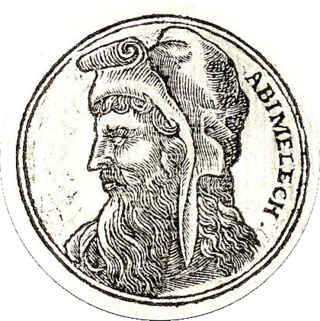
Abimelech or Abimelek was the king of Shechem and a son of biblical judge Gideon. His name can best be interpreted as "my father is king", claiming the inherited right to rule. He is introduced in Judges 8:31 as the son of Gideon and his Shechemite concubine, and the biblical account of his reign is described in chapter nine of the Book of Judges. According to the Bible, he was an unprincipled and ambitious ruler who often engaged in war against his own subjects.

Gaal (Hebrew:גַּעַל) was a minor 12th century BCE biblical character, introduced in the 9th chapter of Judges in the Hebrew Bible as the son of Ebed or Eved, or the son of a slave. His story is told in Judges 9:26–41.
Aynata is a village in Lebanon. It is located in the southern portion of the country. A stronghold for Hezbollah, during the war with Israel in 2006, about 60% of the homes in the town were destroyed.

Jurish is a Palestinian town in the Nablus Governorate in northern West Bank, located 27 kilometers Southeast of Nablus. According to the Palestinian Central Bureau of Statistics (PCBS), the town had a population of 1,541 inhabitants in 2017.

Majdal Bani Fadil is a Palestinian town in the Nablus Governorate of the State of Palestine in the northern West Bank, located 23 kilometers (14 mi) southeast of Nablus. According to the Palestinian Central Bureau of Statistics (PCBS), the town had a population of 2,907 inhabitants in 2017.

Rummanah is a Palestinian village located 17 kilometers (11 mi) northwest of the city of Jenin in the northern West Bank. According to the Palestinian Central Bureau of Statistics (PCBS), the town had a population of 3,372 inhabitants in mid-year 2006.

Shahma was a Palestinian Arab village located 15 kilometers (9.3 mi) southwest of Ramla. Depopulated on the eve of the 1948 Arab-Israeli war, the village lands today form part of a fenced-in area used by the Israeli Air Force.
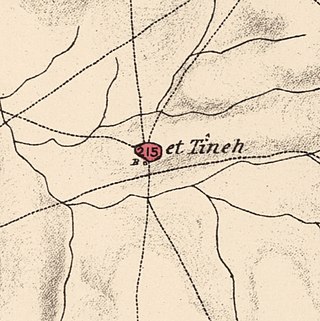
Al-Tina, or Khirbet et-Tineh was a Palestinian Arab village in the Ramle Subdistrict of Mandatory Palestine. The village was located between the Shfela and southern Israeli coastal plain. It was depopulated during the 1948 Arab–Israeli War on July 8, 1948, by the Givati Brigade under Operation An-Far. It was located 20. km south of Ramla. The hill on which the village was built stands today next to the Kiryat Mal'akhi – Yoav railway station and next to Highway 6. Archeological excavations at the site revealed the remains of a Byzantine settlement.
Adam Reusner, also Reissner or Reißner in Mindelheim) was a German mystic, hymn-writer and poet.
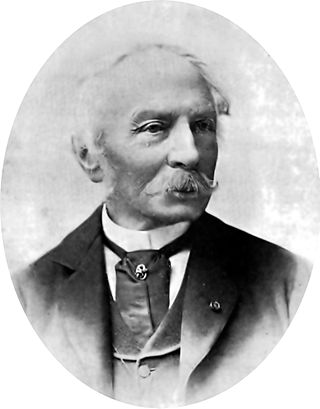
Charles William Meredith van de Velde was a Dutch lieutenant-at-sea second class, painter, cartographer, honorary member of the Red Cross and missionary.

Kamouh el Hermel, the Pyramid of Hermel is an ancient pyramid located 6 kilometres (3.7 mi) south of Hermel in Baalbek-Hermel Governorate, Lebanon.
The Monastery of Saint Maron, also called the Cave of the monks, is an ancient cavern initially developed as a refuge structure by the Romans and later used as a Maronite monastery and carved out of solid rock in the side of a cliff. It is located around 200 metres (660 ft) from Ain ez Zarqa, the source of the Orontes river, south of Hermel in Baalbek-Hermel Governorate, northern Lebanon.
Joost Berman was a Dutch lawyer, judge, politician, poet, nonfiction writer, and editor.
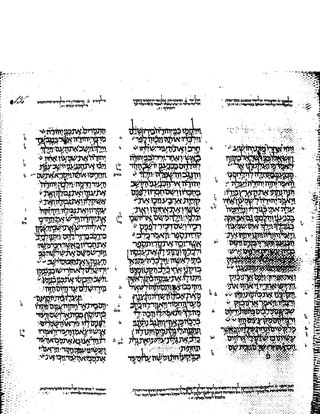
Judges 9 is the ninth chapter of the Book of Judges in the Old Testament or the Hebrew Bible. According to Jewish tradition the book was attributed to the prophet Samuel, but modern scholars view it as part of the Deuteronomistic History, which spans the books of Deuteronomy to 2 Kings, attributed to nationalistic and devotedly Yahwistic writers during the time of the reformer Judean king Josiah in 7th century BCE. This chapter records the activities of judge Gideon's son, Abimelech. belonging to a section comprising Judges 6 to 9 and a bigger section of Judges 6:1 to 16:31.
Khirbet el-'Ormeh or Horvat Ormah is an archaeological site located in the West Bank, around ten kilometers southeast of the Palestinian city of Nablus. The site contains the remains of a Hasmonean-Herodian fortress consisting of a fortification wall, rectangular towers constructed in the Hellenistic style, and a series of large cisterns for storing rainwater.
References
- ↑ Judges 9:41
- ↑ Carta's Official Guide to Israel and Complete Gazetteer to all Sites in the Holy Land. (3rd edition 1993) Jerusalem, Carta, p.137, ISBN 965-220-186-3
- ↑ Van De Velde, 1854, p. 303 "Amongst others, I noticed from this spot in a westerly direction, at about an hour's distance, a hill top on which are situated the ruins of M-'Arma, in which I believe I may recognise the Arumah of Judges ix. 41, where Ablmelech remained after he had struck the first blow, and before he destroyed Shechem altogether."